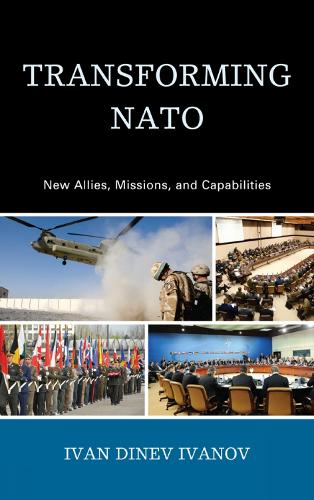
Transforming NATO: New Allies, Missions, and Capabilities
(Paperback)
Publishing Details
Transforming NATO: New Allies, Missions, and Capabilities
By (Author) Ivan Dinev Ivanov
Bloomsbury Publishing PLC
Lexington Books
8th April 2013
United States
Classifications
Professional and Scholarly
Non Fiction
Theory of warfare and military science
International trade and commerce
Public international law: economic and trade
355.03109182
Physical Properties
Paperback
316
Width 153mm, Height 226mm, Spine 22mm
440g
Description
Transforming NATO: New Allies, Missions, and Capabilities, by Ivan Dinev Ivanov, examines the three dimensions of NATOs transformation since the end of the Cold War: the addition of a dozen new allies; the undertaking of new missions such as peacekeeping, crisis response, and stabilization; and the development of new capabilities to implement these missions. The book explains these processes through two mutually reinforcing frameworks: club goods theory and the concept of complementarities. NATO can be viewed as a diverse, heterogeneous club of nations providing collective defense to its members, who, in turn, combine their military resources in a way that enables them to optimize the Alliances capabilities needed for overseas operations.
Transforming NATO makes a number of theoretical contributions. First, it offers new insights into understanding how heterogeneous clubs operate. Second, it introduces a novel concept, that of complementarities. Finally, it re-evaluates the relevance of club goods theory as a framework for studying contemporary international security. These conceptual foundations apply to areas well beyond NATO. They provide useful insights into understanding the operation of transatlantic relations, alliance politics, and a broader set of international coalitions and partnerships.
This update in April 2013 covers new developments related to NATOs transformation after this book was originally published: http://homepages.uc.edu/~ivanovid/pdfs/book_update.pdf
Reviews
In this volume, Ivanov provides a new and valuable perspective on why NATO did not fade away at the end of the Cold War. Dr. Ivanov argues convincingly that understanding NATO's post Cold War evolution requires examining the dynamic intersections of three processes: membership expansion, mission enlargement and capabilities transformation. This analysis debunks arguments that NATO would become irrelevant in the absence of the Soviet threat as well as those warning that expanded NATO's membership would bring decision-making to its knees. This book makes a valuable contribution to the discussion of why NATO members continue to value the alliance, even with its shortcomings and fault lines. -- Stanley R. Sloan, visiting scholar at Middlebury College and author of Permanent Alliance NATO and the Transatlantic Bargain from Truman to Ob
Using new theoretical perspectives, Ivan Ivanov's Transforming the Club provides innovative and compelling explanations for NATO's ongoing transformation. The book is a welcome addition to the literature on NATO's new members, its array of new missions, and the alliance's evolving capabilities. -- Ryan C. Hendrickson, professor of political science at Eastern Illinois University and author of Diplomacy and War at NATO: The Secretary General
This analysis of NATO's transformation over the past two decades is required reading for all scholars of the subject. It lucidly explains the relationship between NATO's gradual expansion, its changing mission, and its altered capabilities and resources. Here is a masterly study of the alliance's foreign and security policy and how it has evolved in a changing world. -- William Howard Taft IV, U.S. Deputy Secretary of Defense, 19841989, and former U.S. Permanent Representative to NATO
Ivanov (Univ. of Cincinnati) provides a novel, interesting set of analytical approaches to examine NATO's post-Cold War missions, capabilities, and new members. The author advances the ideas of club goods theory as well as "complementarities" to help understand the widespread changes in NATO's evolution from a conservative Cold War military alliance to the current, ever-expanding role it plays in global security affairs. Ivanov views all of these changes in a rather holistic sense, noting how new missions impact new members, as well as result in an expansion of different capabilities. This book offers an excellent overview of the many changes witnessed in the aftermath of the Soviet Union's collapse, including examinations of NATO's operations in the Balkans, as well as an excellent chapter on NATO's struggling mission in Afghanistan. Chapter 5, which focuses upon NATO's newest allies and various partners that work with the alliance, is another especially useful chapter. Ivanov draws from an extensive body of NATO scholarship as well as his own personal interviews to produce an impressive addition to the literature. Summing Up: Recommended. Undergraduate readers and above. * Choice Reviews *
Author Bio
Ivan Dinev Ivanov is visiting assistant professor in the Department of Political Science at the University of Cincinnati.
